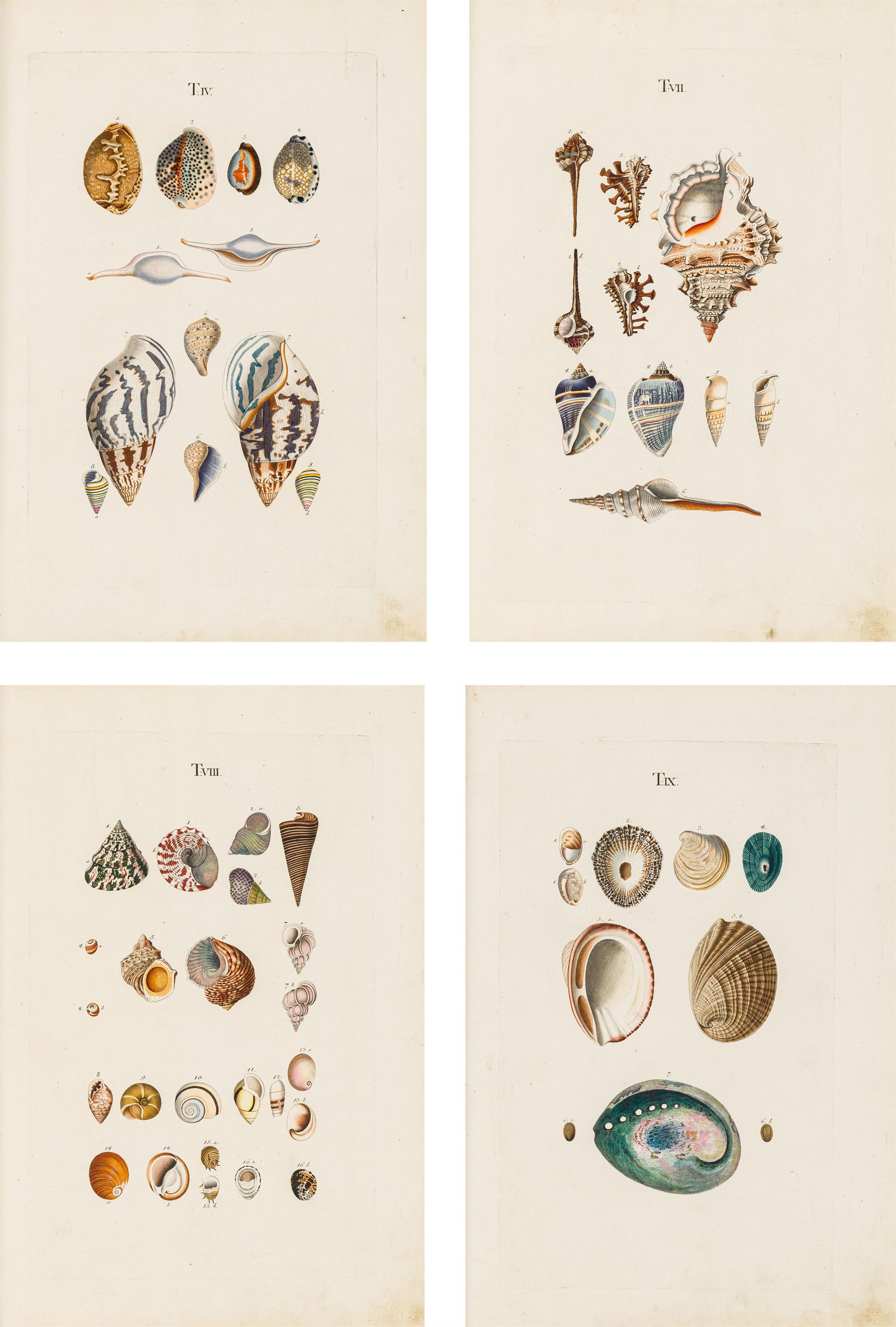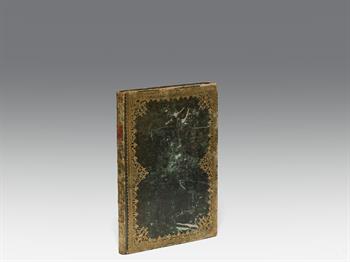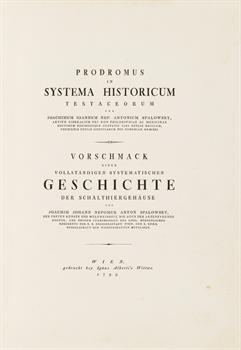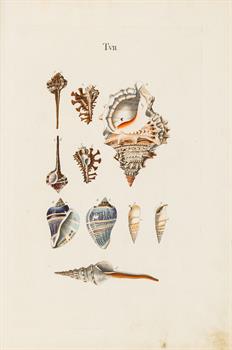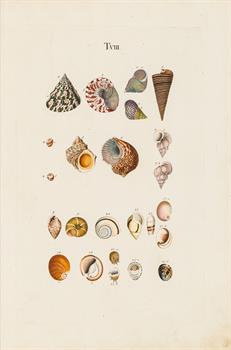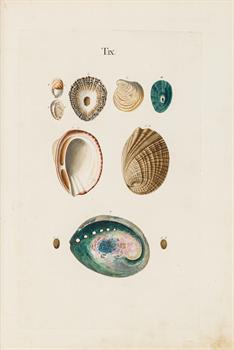1089
Joachim Johann Nepomuk Anton Spalowsky
(Wien/Reichenberg 1752 - 1797 Wien)
„Prodromus in systema historicum testaceorum. Vorschmack einer vollständingen systematischen Geschichte der Schalthiergehäuse, Vienna, Ignaz Alberti's Wittwe, 1795.“
1 white leaf, printed title, engraved frontispiece in original colouring, 4 white leaves, 4 unnumbered leaves, 88, IV pp., 13 unnumbered leaves, 1 white leaf. With 13 engraved plates in original colouring. First white leaf trimmed at the bottom; title with indistinct remains of a stamp; minimal spotting; contemporary green marocco binding with title on the spine, cover borders and gilt spine as well as gilt edges on three sides, rubbed and bruised, 2°.
First edition. - One of 25 copies, intended as a preview for a more extensive work that Spalowsky never realised.
Provenance
private property, Austria
Literature
C. Nissen, Die zoologische Buchillustration, I, 1969, no. 3923;
Alan R. Kabat „J.J.N.A. Spalowsky (1752-1797) and the Prodromus in Systema Historicum Testaceorum (1795)“ in: Archives of Natural History (1996) 23 (2), p. 245-54.
Estimate: € 10.000 - 20.000
Hammer price: € 30.000
Auction is closed.
Only few biographical details are known about the author. Born in 1752, probably in Vienna or Reichenberg, today's Liberec in the Czech Republic, Spalowsky was „der Arzneyenkunde Doctor, und erstem Stabsmedicus des Löblichen Bürgerlichen Regiments der k.k. Residenzstadt Wien” ("doctor of medicine and first staff physician" (see title)), as well as a member of the Royal Bohemian Society of Sciences in Prague. The polymath intended to compile his wide-ranging knowledge in a comprehensive work on natural history. As part of this multi-volume natural history, which could not be realised, his conchological treatise was to prove to be one of the rarest published books on molluscs and other shell organisms (cf. Kabat, p. 245).
Spalowsky charmingly explains in his preface: "This present prospect serves ... to convince the conchyliological enthusiast that the objects it contains have been depicted exactly according to the nature before his eyes. ... I only ever refer to mere shells and never to the inhabitants." (freely translated) The generously designed plates in folio format impress with their high-quality hand-colouring and partial imitation of mother-of-pearl, the heightening of which creates an iridescent sheen when the light falls on it. In Latin and German, the shells of molluscs are systematically categorised into tube shells, snails, and mussels. The reader encounters imaginative and melodious names such as "elephant sea tooth", "gazelle horn sea stick", "fig bladder", "bishop's mitre", "cat's tongue", "king's mantle" and others.

